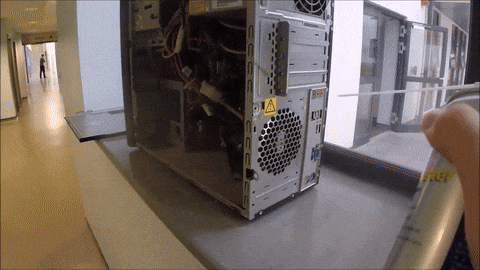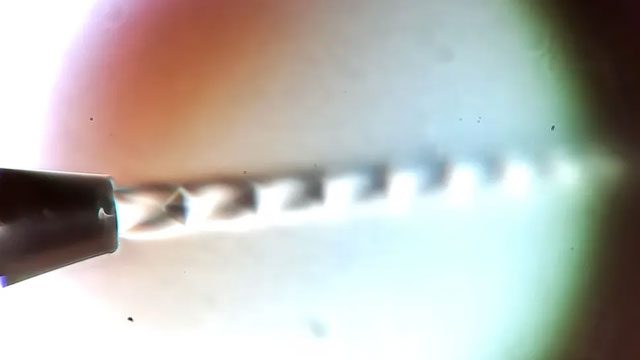This is the “secret” that explains why compressed air cans are so effective at blowing away dust from devices.
Compressed air cans are commonly used by technology users to clean dust from electronic devices, such as PCs or laptops. These cans, typically cylindrical in shape and equipped with a nozzle and spray button, are often made from metal or plastic and can hold air volumes ranging from 100ml to 400ml. Compressed air is stored in the can under high pressure and is released when the user presses the spray button. The strong air stream from the can effectively removes dust from electronic devices, machinery, components, and other items with ease.
Using a compressed air can is very simple. Users just need to shake the can before use, hold it about 20-30 cm away from the item to be cleaned, and press the spray button. After the dust is blown away, users can use a brush or a soft cloth to wipe the surface clean.
In addition to its convenience and effectiveness, compressed air cans have several other outstanding advantages. Compressed air does not create secondary dust, ensuring safety for sensitive electronic devices and machinery. The cans can also be used on various materials without causing damage.

A compressed air can is an effective tool for cleaning PCs.
Notably, a YouTuber specializing in precision machining recently discovered an interesting fact about these compressed air cans. According to their findings, when sprayed, they can create a supersonic air stream, exceeding the speed of sound. This is the “secret” that explains why compressed air cans are so effective at blowing away dust from devices.
It is reported that the YouTube channel Cylo’s Garage observed distinctive “sudden bright streaks” in the airflow emitted from a compressed air can branded Staples. Essentially, these sudden bright streaks are a type of air pattern commonly seen in the flight path of supersonic aircraft or rockets. At that point, shock waves and expansion waves overlap, creating characteristic diamond shapes in the air.

Slow-motion footage shows that the air stream emitted from the compressed air can can reach supersonic speeds, exceeding the speed of sound.
Cylo’s Garage utilized high-speed photography equipment using Schlieren technique to confirm that the compressed air can is pushing out a supersonic air stream. This device works by bending light as it passes through areas of different air density. The sudden bright streaks appear clearly in the Schlieren images, indicating the presence of supersonic air.
To further investigate, Cylo’s Garage used a new testing device equipped with a better lens and a columnar light source. They captured clearer images of the sudden bright streaks from the compressed air can and other nozzles attached to it.
This discovery shows that even seemingly simple items like compressed air cans can harbor intriguing scientific mysteries. A better understanding of the properties of compressed air could lead to new applications in fields such as aerospace engineering and medicine.


















































